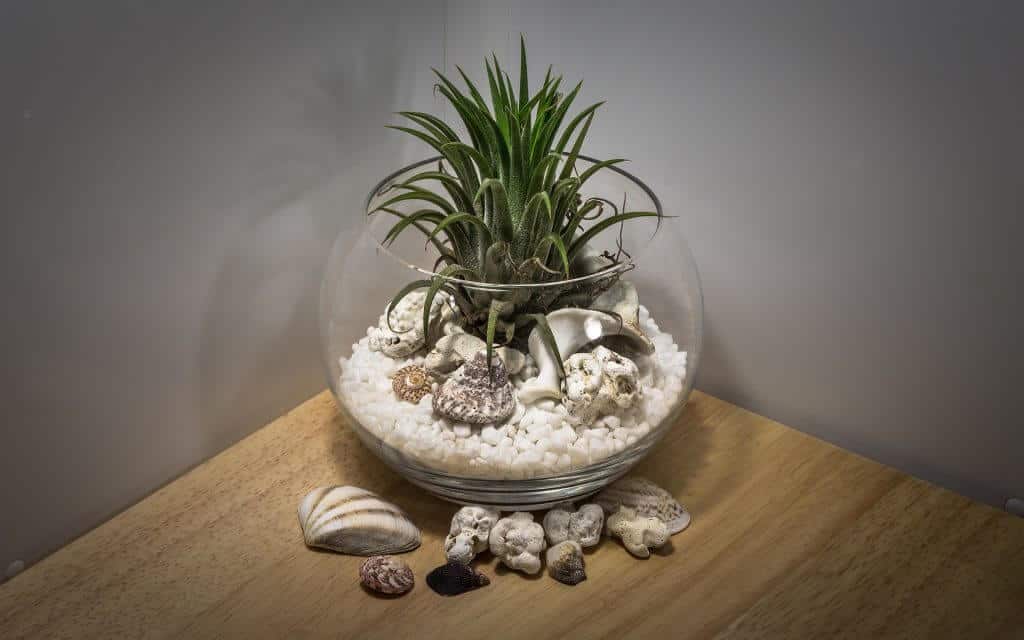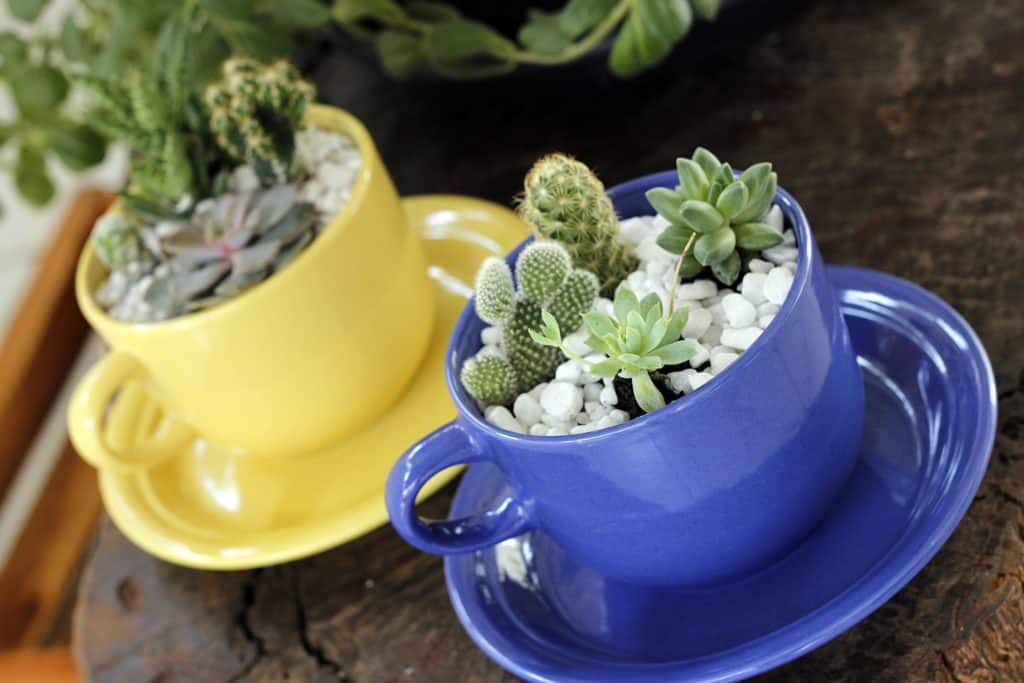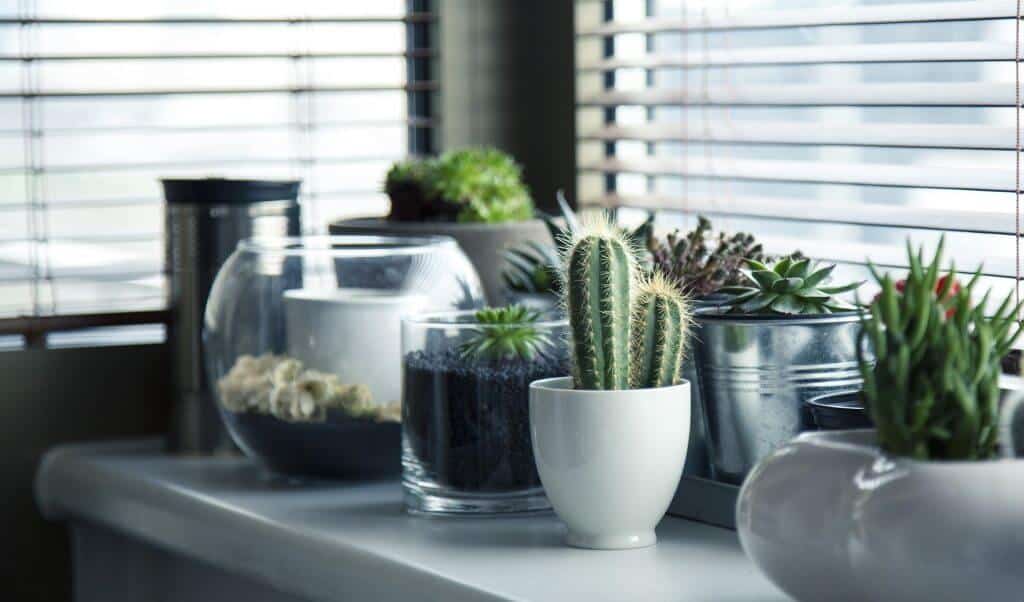Step-By-Step Guide On How To Plant A Terrarium
You do not need a lot of gardening space to learn how to plant a terrarium. You can start small and build from there.
One of the best things about a terrarium is that it allows you to have an entire garden in the smallest of spaces.

Learning how to plant a terrarium and setting it up is unbelievably easy.
Required Material to Make a Terrarium:
- Glass container
- Activated charcoal
- Pebbles
- Soil
- Plants
- Spray bottle
Step 1: Choose Your Terrarium Type
You have two options when choosing terrariums: open and closed. The main difference between the two is the lid that comes with a closed terrarium.
If you want to plant dry-weather plants such as cacti and succulents, consider setting up an open terrarium to allow you to mist the plants with water now and then.
On the other hand, a closed terrarium features a lid that traps moisture and creates its own self-sufficient micro-system. Plants that love humidity perform best in closed terrariums.
Step 2: Choose a Container
The main rule here is to use glass; the type, shape, and size to use are up to your creativity and needs. However, be sure to choose a container with a lid if you want a closed terrarium.
While glass is the standard for terrariums, if you are doing an open terrarium, you can get creative with your container such as using large teacups.

Step 3: Soil Layering
Once you have determined the terrarium type and container to use, it is time to get to work. Cover the bottom of the tank with pebbles or stones. The layer of pebbles should be about an inch or two. The primary function of the pebble layer is to provide drainage and prevent plants’ roots from rotting.
Add a layer of activated charcoal on top of the pebble layer to prevent the buildup of bacteria and mold in the terrarium.
Next, add a layer of potting soil, about an inch or two thick. It is essential to understand that some plants may require specific types of potting soil, such as succulents.
The three layers of pebble, activated charcoal, and potting soil will probably take up about a quarter of the space inside the container.
For a quick DIY terrarium, purchase this Complete Terrarium Soil Kit from Amazon to get you started.
Step 4: Planting
Terrariums have limited spaces, and it is advisable to make sure that the plants you choose for your terrarium have similar moisture and light requirements.
If you want a closed terrarium, select plants that are tolerant to moderate to low light conditions and perform best in humid conditions.
Plant options for closed terrariums include ivy, moss, thyme, baby’s tears, and creeping fig.
For an open terrarium, pick plants that love heat including air plants, aloe, and cacti. Put the larger plants inside the terrarium first and add the smaller ones last.
Related: How to Grow Micro Greens Indoors | Boost Your Nutrition and Save Money
Step 5: Be Creative
Once you have the plants in place, let your creative side shine by adding shells, figurines, stones and other forms of decorations to the terrarium.
Step 6: Care
This is one of the critical points in learning how to plant a terrarium. Resist the temptation to overwater. All the plants need is a light mist from a spray bottle. Spray the mist on a weekly basis for open terrariums and only a few times for a closed one.
Put the terrarium close to a window for exposure to indirect sunlight. Also, be sure to undertake regular pruning to remove dead pieces and prevent plants with vigorous growth from dominating the terrarium.

How to Plant a Terrarium 101: Best Soil for Terrariums
Packaged Soil
Bagged soil specially formulated for terrariums can be found at your local garden, pet store, or you can purchase directly from Amazon.
You may also use standard bagged potting soil for your plant terrarium. The ideal soil for a terrarium is one that is clean and rich in organic matter.
Bagged potting soil often contains all the ingredients that your terrarium plants require. A significant benefit of packaged soil is that it is sterilized, therefore; it does not require further preparation.
Soil Amendments
Bagged soil for terrarium often contains sand, peat moss, garden soil, and other amendments.
Some of the amendments included in packaged soil include perlite and sphagnum peat moss. The latter is resistant to bacteria and helps to retain water in the soil while the former contributes to enhancing air circulation in plant root systems.
Soil Base Assembly
When learning how to plant a terrarium, take into consideration the importance of the terrarium container. Most terrarium containers do not have drainage holes.
Therefore, stagnant water in the container may begin to smell unless it drains from the soil base. Line the bottom of the container with an inch layer of pebbles or lava rocks to ensure the terrarium remains clean and fresh.
Fertilizer
Plants inside a terrarium are not meant to grow vigorously. Therefore, use fertilizer sparingly or avoid it altogether. Otherwise, your terrarium will require more frequent maintenance.
Terrarium may seem like a very complicated term when you are just starting to learn how to plant a terrarium.
However, its meaning is quite simple; it is just a fancy word for a small indoor garden in a container, preferably a glass container. Terrariums add an element of beauty and oneness with nature to any home.
